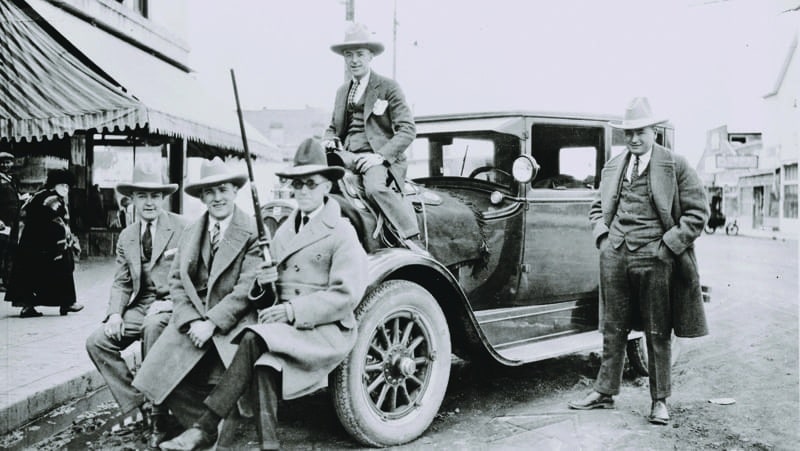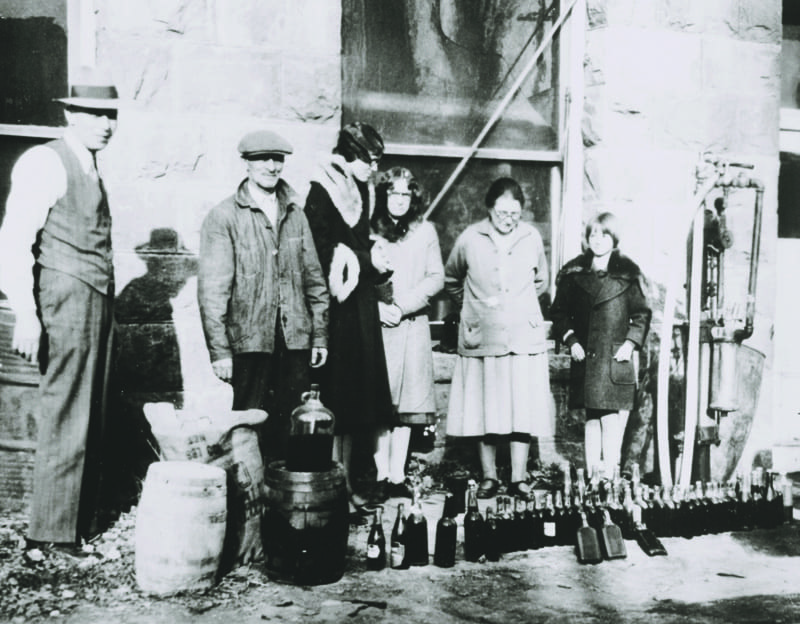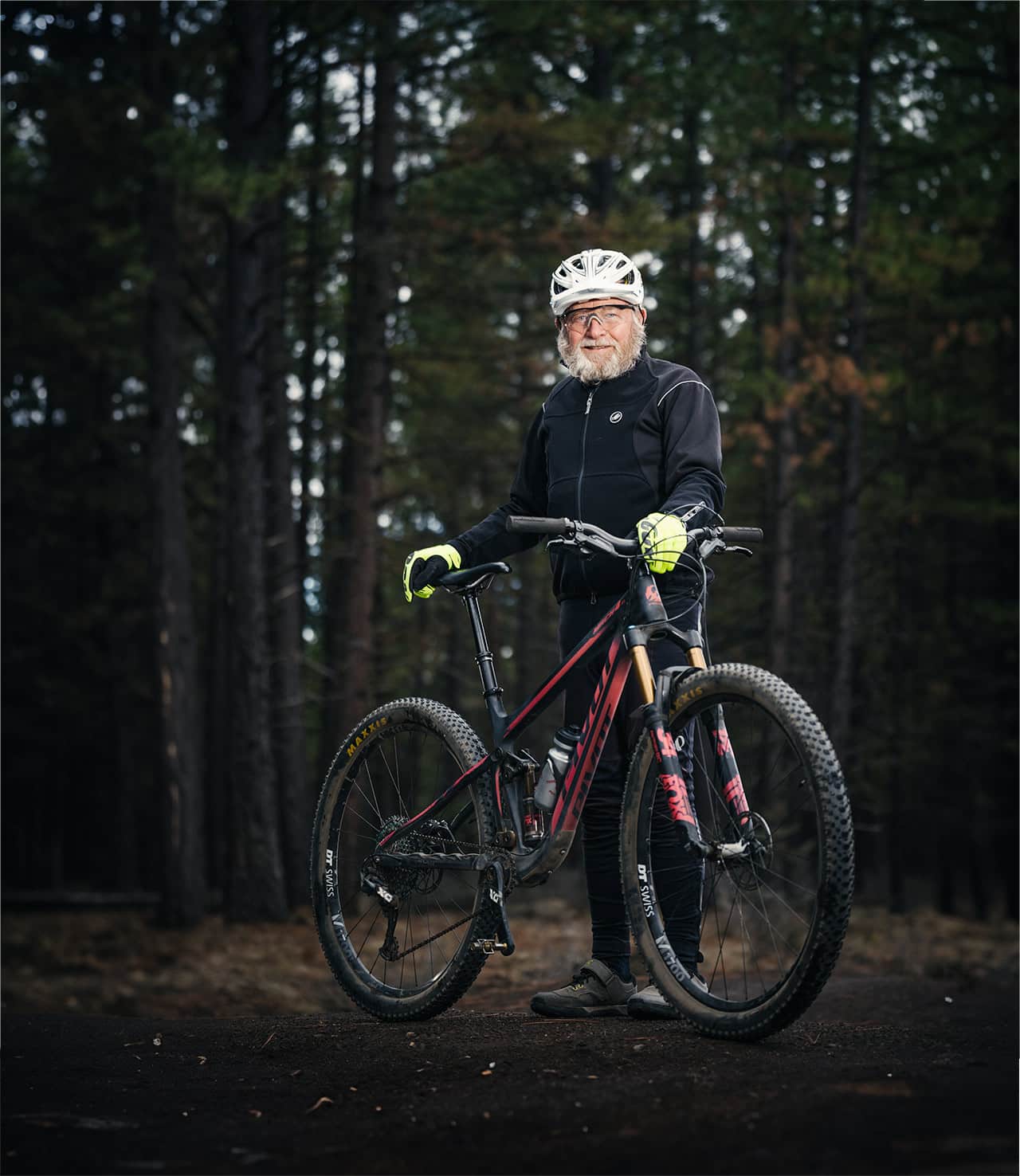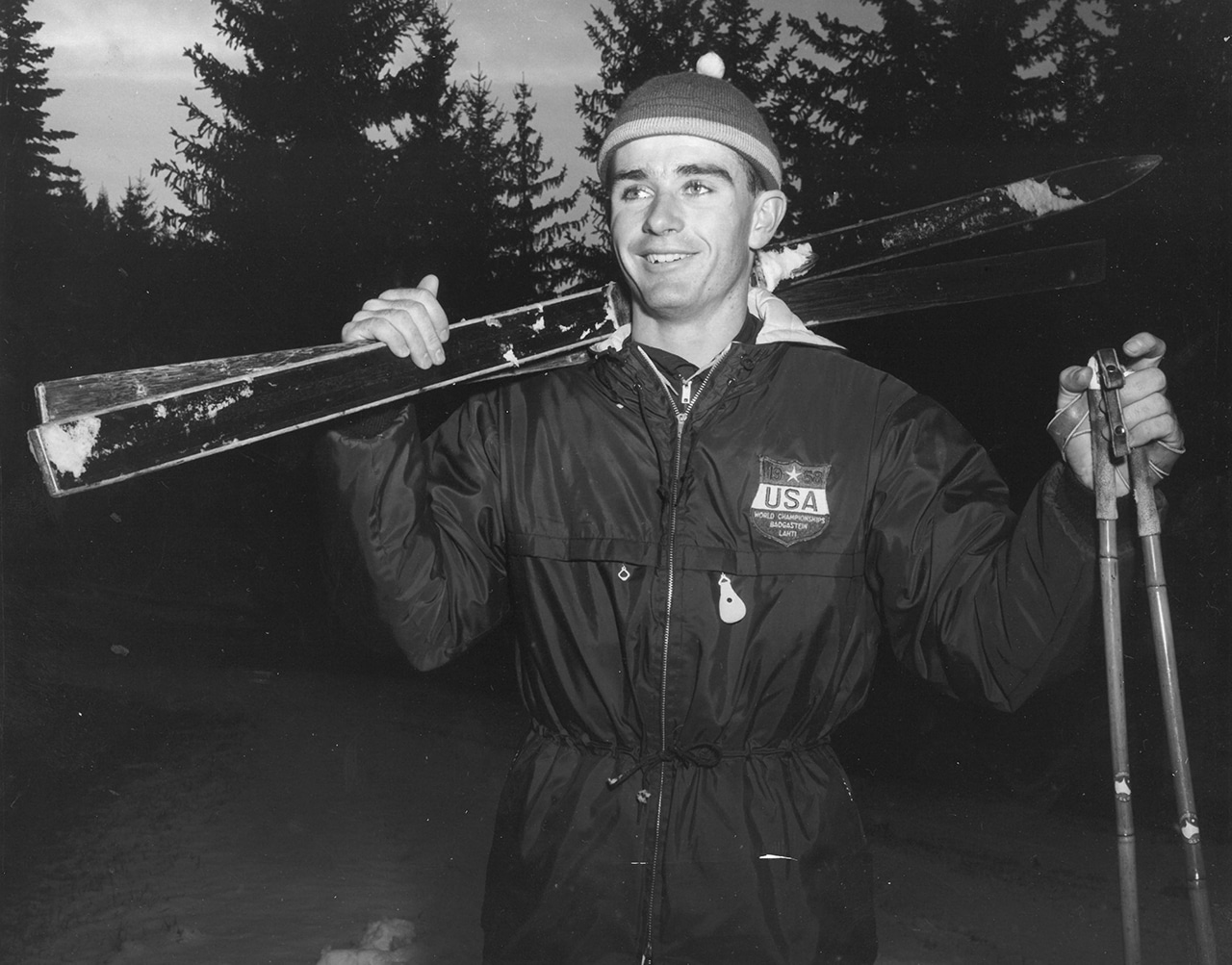A brazen bombing remains at the heart of a ninety-year-old mystery that rocked Bend at the height of Prohibition.

It is three o’clock in the morning and the burgeoning mill town of Bend is asleep. The first blow of the mill whistle won’t sound for another four hours. A dog barks, breaking the silence that envelops the tightly knit neighborhood around Hood Place and Congress Street, just blocks from Bend’s commercial center.
Suddenly, an explosion rips through the Congress Apartments. The ground shakes as bricks fly like cannonballs from the back of the one-story building where a massive hole has opened. Inside the small apartment, two state prohibition agents scramble, alive but shaken. The explosion was no accident, rather a hit ordered by outlaw moonshiners on the agents who worked as enforcers of unpopular prohibition laws.
Welcome to Bend circa 1926, where lawlessness and old school retribution put even lawmen in the line of fire. The brazen bombing is believed to have been payback for the killing of a local moonshiner just a few weeks earlier east of Bend. Despite much publicity at the time, the crime remains unsolved to this day.
Ninety-one years later, Bend Police cold case detectives Sgt. Devin Lewis and Lt. Jason Maniscalco are looking at crime scene photos from the dynamiting of Congress Apartments in downtown Bend.
“Look, the whole back wall is gone,” said Lewis. “I’ve never heard about this case before.”
Although there were never Al Capone-Elliot Ness styled shootouts between the police and moonshiners, Bend was a rough and tumble town in its early days. Loggers and blue-collar millworkers supplied a ready and thirsty market for moonshiners eager to skirt the state and federal laws banning the production and sale of alcohol. State and federal agents were never far behind, and for several years a game of cat and mouse played out across the High Desert.

According to contemporary accounts in the local newspaper, the attempted hit on the two state prohibition agents was believed to be retribution for the killing of a suspected bootlegger during a raid on a clandestine distillery between Brothers and Burns. Since no one was killed in the explosion, the statute of limitations has long expired. The century-old case is too old for law enforcement to prosecute or even pursue. It is the coldest of cold cases.
Like many local policing agencies around the country, the Bend Police Department does not have a dedicated cold case unit. With limited resources and new cases popping up daily, most detective resources are dedicated to solving the latest crimes since evidence and memories are fresh.
That’s not to say that cold cases are ignored. They might appear to be dead, but they’re just dormant, waiting for the right clue to emerge or witness to come forward. Sgt. Lewis is supervising detective. He assigns the caseload to one of the eight detectives in the unit.
“Everyone has read up on their cases. It’s just easier if we get a great tip or new evidence comes to light,” said Lewis.
A case may never be solved unless a tip comes in or crucial evidence is unearthed.
“It all comes down to the solvability factor,” said Lewis. “You could spend hundreds of hours working on a cold case and not get any further.”
Time is the enemy and the ally in cold cases. It may be years or decades before a citizen decides to provide a clue to police.
“A witness may come forward. It may not be an eyewitness, but maybe a family member who remembers something from the past,” said Lewis. “They tell us, I remember when I was ten years old, my brother was talking about his involvement in the case. I really didn’t think about it until yesterday.”
Lewis stressed it may not be the best information, but it gives the detectives a point of reference to other leads, which could crack the case.
Modern forensic technology has changed the amount of evidence collected. A murder case may contain binders of written evidence, interviews and transcripts. It is not uncommon for a case file to contain 600 pages.
“A fifty-year-old murder case may be captured in a two-inch-thick folder,” said Maniscalco.
In the case of the Congress Apartment bombing, time has erased all but a few historical records. Today, the case is a piece of local lore. Still, the brash act fascinates, offering a window into the Wild West mentality that endured in rural outposts such as Bend well into the 20th century.

To understand the Congress Apartments’ attack, one requires a bit of historical context. In 1916, the temperance movement managed to squeak through a referendum that made Oregon an alcohol-free state—four years before the rest of the country. The dry years were a boon for moonshiners and bootleggers in Central Oregon, but the law and practice didn’t always square, according to Prineville historian Steve Lent with the Bowman Museum.
“Enforcement was pretty lax, particularly up until the Prohibition,” said Lent.
The Volstead Act, which kicked off federal prohibition, made everything containing alcohol illegal and marked the start of a more deliberate enforcement approach. Yet, the laws of supply and demand dictated that moonshiners would fill the void left by shuttered commercial distilleries. These alcohol outlaws made their living by circumventing the liquor ban while avoiding the much-feared state and federal prohibition agents. Stills popped up all over the High Desert, with production facilities hidden in lava caves and backyard sheds.
“There were not enough law enforcement officers to cover all of Central Oregon,” said Lent.
Janelle Alameda remembers hearing stories about her grandfather, “Buck” Mariott, who served as a sergeant in the Marine Corps in World War I. In the early 1920s, Mariott became a state prohibition officer. Stationed in Eugene, Mariott patrolled the Central Oregon high desert together with his partner, “Mac” McBride.
“My grandfather would go out in the wilderness and look for stills,” said Alameda. “It was a dangerous occupation, and he always carried a gun.”
Back in 1926, McBride and Mariott worked for the Oregon Bureau of Prohibition, a sort of local version of the federal ATF. They worked in cooperation with the police and sheriff’s departments in Bend, Redmond, Prineville and Madras.
It was a risky proposition to go after moonshiners who were often armed and eager to avoid losing their investment. But that was exactly what Mariott and McBride decided to do on February 17, 1926. Based on a tip from an informant, the agents travelled to an alleged moonshine operation outside of Hampton, Oregon.

The agents reached the area in the afternoon and found a stilling operation stashed in a primitive shelter constructed of juniper logs and dirt. Peering through a window, they found ten barrels of mash brewing over a simmering fire, two fifty-gallon stills and another twenty-four barrels of mash. McBride and Mariott pried open a window, crawled inside and waited.
The following morning, Vayle Taylor, a homesteader from nearby Alfalfa, arrived on horseback. What happened next is a matter of historic record and based on the agents’ recollection.
According the agents, it was Taylor who got the drop on them after spotting their tracks outside his hideout. He turned the tables on the waiting agents by jamming the door, locking them inside. According to the two agents, Taylor then struck a match and brandished a rag. Clearly the bust was not going as planned, with Taylor seemingly ready to burn down his operation with the agents inside. According to Mariott, the desperate agents broke down the door from the inside. In the process, McBride’s gun accidentally discharged, instantly killing Taylor.
Both McBride and Mariott were cleared at the coroner’s inquest in Prineville the following day. Taylor’s associates, a group known as the Bear Creek and High Desert Gang, weren’t ready for a truce. They were looking to settle the score. They didn’t wait long. Just eighteen days later, the violent blast shook the Congress Apartments where Marriot and McBridge were living.
Local blasting experts speculated the criminals had used either fifty sticks of dynamite or twenty five to thirty pounds of TNT. The police eventually linked the explosion to members of the Bear Creek and High Desert Gang based on information from an informant.
Although the crime was investigated by the Bend Police and the Deschutes County Sheriff’s departments, it was never solved. The county court even offered a $1,500 reward to anyone who could identify the criminals who blew up the building. In this case, the mystery is more a matter of historic curiosity than justice.
Everybody connected to the case is long gone. Vayle Taylor is buried at the Pilot Butte Cemetery in Bend beside his mother, Mildred, who died in 1920. There is no gravestone marking the site. Alvie “Buck” Mariott and his wife Myrtle are laid to rest at the Willamette National Cemetery. “Mac” McBride disappeared from the gaze of history in 1932, the last time his name was mentioned in the Bulletin. And the criminals who dynamited Congress Apartments never stood before a judge.
Within five years after the bombing the eighth amendment had been repealed, formally ending prohibition. With the stroke of a pen, President Roosevelt undid seventeen years of prohibition in Oregon. The Bureau of Prohibition and its agents were relegated to history. The first truckload of legal beer rolled into Bend on April 24, 1933.
Still, it would be years before the moonshine business dried up in Central Oregon. It seemed that some locals preferred the cheap backyard brand of booze to the highly taxed bottles in the store. But the heyday of moonshiners had come and gone—with a boom.




